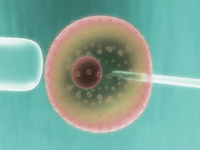UCLA Researchers Identify Method for Generating Stem Cell-like Cells
UCLA Researchers Identify Method for Generating Stem Cell like Cells >Researchers at the University of California Los Angeles (UCLA) School of Dentistry report that the most common type of human skin cell keratinocytes can be used to produce cells
 Researchers at the University of California Los Angeles (UCLA) School of Dentistry report that the most common type of human skin cell—keratinocytes—can be used to produce cells with stem cell-like characteristics. The findings, published in the Journal of Biologic Chemistry‘s November 2011 issue, may prove beneficial to patients with limited sources of endogenous stem cells. The discovery was made as researchers investigated the use of stem cells to regenerate dental tissue. To date, this portion of the team’s research has been conducted in the lab only—human clinical trials are still needed to prove safety and efficacy.
Researchers at the University of California Los Angeles (UCLA) School of Dentistry report that the most common type of human skin cell—keratinocytes—can be used to produce cells with stem cell-like characteristics. The findings, published in the Journal of Biologic Chemistry‘s November 2011 issue, may prove beneficial to patients with limited sources of endogenous stem cells. The discovery was made as researchers investigated the use of stem cells to regenerate dental tissue. To date, this portion of the team’s research has been conducted in the lab only—human clinical trials are still needed to prove safety and efficacy.
After introducing a highly synthesized gene (?Np63?) into skin tissue cells, the team observed that keratinocytes started to resemble stem cell-like cells—or identical cells capable of self-renewal and replenishment. The cells could also differentiate to create specialized cells of various tissue types. Investigations into stem cells’ regenerative therapeutic benefits are ongoing for the treatment of conditions such as heart disease, diabetes, neuronal disorders, and liver diseases.

